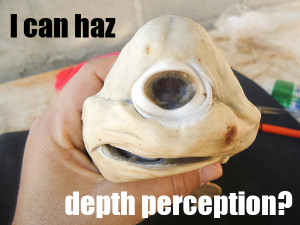 If you’ve been out of touch for a while lately and haven’t immediately grokked what this post is about from the title, it concerns a surprising recent find by a Mexican fisherman of a very special little shark. Enrique Lucero León was fishing in the Gulf of California and caught himself a pregnant dusky shark. Upon cutting her open, Enrique found several normal dusky shark embryos and one that stood apart from the others. “Cyclops shark”, as he became known, was smaller than its siblings, pure white and with a single large eye right in the middle of the head, facing forwards. Needless to say, this unusual find was worthy of comment, and it was picked up on a sportfishing blog (which, unfortunately, seems mostly devoted to catch-and-kill trophy fishing). I think it’s safe to say that Cyclops shark’s discovery then went viral, because you can now read about the little guy all over the place (like here, here, here, here, here, here and here).
If you’ve been out of touch for a while lately and haven’t immediately grokked what this post is about from the title, it concerns a surprising recent find by a Mexican fisherman of a very special little shark. Enrique Lucero León was fishing in the Gulf of California and caught himself a pregnant dusky shark. Upon cutting her open, Enrique found several normal dusky shark embryos and one that stood apart from the others. “Cyclops shark”, as he became known, was smaller than its siblings, pure white and with a single large eye right in the middle of the head, facing forwards. Needless to say, this unusual find was worthy of comment, and it was picked up on a sportfishing blog (which, unfortunately, seems mostly devoted to catch-and-kill trophy fishing). I think it’s safe to say that Cyclops shark’s discovery then went viral, because you can now read about the little guy all over the place (like here, here, here, here, here, here and here).
Some of the links above address where Cyclops shark’s condition may originate. Briefly, it’s probably a sort of holoprosencephaly (ungh!), which is a class of birth defects in which the front part of the brain doesn’t separate into two hemispheres properly and, consequently, neither does the face. This can present itself in all sorts of ways, some more unfortunate than others, and “cyclopia” is one of them. Abnormal embryos occur at very rare rates, but given the number of births that take place in nature, they’re actually happening all the time but are rarely seen because they frequently do not survive very long. There’s more to this viral story than genetic mutations and abnormal fetal development, however, so what is it about Cyclops shark that is so engrossing, and how is it that he comes to be so famous so quickly?
- Freak factor. Lets get the obvious one out of the way. Humans are programmed to recognise and be fascinated by the unusual and the out of the ordinary. A shark with one giant forward-facing eye definitely qualifies, especially when you consider his startling lack of pigment.
- Mythology. The cyclops has a long and familiar history in mythology, most famously in ancient Greece, where the cyclops were one-eyed giants, the powerful offspring of father sky (Uranus) and mother earth (Gaia). Later, the cyclops Polyphemus played a central role in Homer’s Odyssey (and the kick-arse Symphony X track of the same name, if you have a spare 24 minutes). The story of Cyclops shark therefore rings familiar with childhood stories and classical mythology.
- He’s white. Settle down, I’m not being racist. In addition to his one unblinking eye, Cyclops shark also apparently lacks pigment of any kind. Humans have always been intrigued and often repulsed by those lacking normal pigment patterns, be they leucistic, amelanistic or true albinos. Indeed, Herman Melville devoted an entire chapter of his masterpiece Moby Dick to the spookiness of white things, proposing that the similarity to the “pallor of the dead” is a major revulsion factor for the viewer: “It was the whiteness of the whale that above all things appalled me”. At the very least, albinos are interesting; I wonder how many readers of this piece will not be able to resist clicking on the albino alligator, the albino dolphin or (be still my heart) the albino whale shark
- He looks “right”. At the heart of it, Cyclops shark looks sort of normal, albeit in a highly abnormal way. Unlike so many teratological accidents, he is not a hideously deformed tragedy. That big ol’ eye seems to be roughly correctly shaped and in the “right” place. I mean, if you are going to have half the normal complement of eyes, then right in the middle of the face is about the right place to put it, right? This central location also lends him a sort of frontal “face” that is lacking in other sharks, where you can only see one side of the head (and one eye) at a time. Indeed, he looks kind of sweet with a sort of goofy smile.
- He’s a freakin’ shark! Of all aquatic animals, sharks may well be the most captivating to the human imagination. Throughout time, but especially thanks to Peter Benchley and Steven Spielberg, sharks scare the bejeebus out of lots of people. The truth is that the actual risk they pose to humans is vanishingly tiny (more people die annually by pulling vending machines onto themselves), but that doesn’t stop gazillions of people tuning in for Discovery’s Shark Week each year. I have mixed feelings about SW, since it simultaneously raises awareness for shark conservation and sensationalizes the danger that sharks pose. That aside, his inherent sharkiness may have driven Cyclops shark’s viral popularity more so than other cyclopia cases, such as Cy the cyclopic kitteh.
- It seems safe to conclude that the meteoric rise of Cyclops shark is probably the result of a confluence of factors that touch on the uniqueness of his case (1,2,3,5), some cultural factors (1,2,5) and the perceptions of the viewer (1, 3, 4). It’s sad that Cyclops shark never had a chance to try and make it in the wide world, but based on other cyclopia cases, the chances he would have survived more than a few hours or days is actually very low. Indeed, it may only be because of the exquisite (and unfortunate, for the siblings anyway) timing of one Mexican fisherman, that we even know of Cyclops shark at all; nature is very good at weeding out such functional imperfections. I seriously doubt there will be another Cyclops shark reported anytime soon, so here’s to you, little guy!


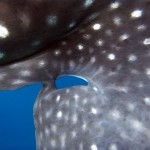
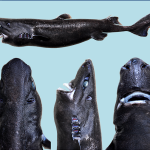
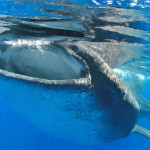
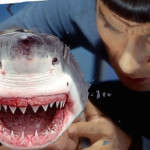

“It’s sad that Cyclops shark never had a chance to try and make it in the wide world…” Give the Syfy Channel time. I’m sure they are hard at work on “Sharktopus vs. Cycloptomus”
Me, I am stealing cycloptomus for my undersea Dungeons & Dragons game, as one of the daughters of Dagon. Her “sister” was inspired by the albino stingray with three tail barbs that was photographed near New Zealand years ago.
In a nutshell:
The party is currently in the waters beneath the Jungle of Lost Ships, a slowly-spiraling Weed-Sea, searching for a tome which will restore their benefactor, a spirit hag, to life. In doing so, they hope to weaken or destroy their nemesis, the blackwater hag – an unliving amalgam of a sea hag blood magus, a salt hag, and the deathlock corpse of the spirit hag herself. Diadema seeks to awaken three magical maelstroms.
In so doing, the waters will drain through planar portals into the subterranean caverns of the lesser moon Celene. Within the caverns, the twin daughters of the demon lord Dagon and elemental princess Olhydra have been imprisoned by their father. Olhydra has spoken to her minions, a group of hags known as the Blue Coven, who in turn spoke with Diadema.
Beneath the Weed-Sea is a seastead, upon which an ancient temple rests. The temple is surrounded by a monstrous creature known as the Olio (inspired by a sea salp and giant siphonophore), who in turn is contained within a massive funnel-shaped sea fan known simply as the Living Barrier. Within the Living Barrier, swarms of golden jellyfish are entrapped.
Beneath the temple are three “shelves” at varying depths. The first holds a jungle of kelp, the second holds a forest of tree-sized coral, and the third is home to ancient ruins and a race of water dwarves.
The party learned from a circle of sea fey there are two ways to defeat the Olio. One involved a clash of titans, so to speak, unleashing a beast known as the hydrimera against the Olio. The hydrimera is imprisoned in the skies above, in a “stolen sea” locked within a cloud island.
The other way involved awakening the “ninety and nine” whose song would undo the Olio. Defeating the Olio grants access to the temple ruins, and thus the altar which summons the third maelstrom.
Excerpt from The World of Symbols: The Eye of the Cyclopes: “…Despite their notorious size the single eye of the Cyclopes is their most defining characteristic. The function of ancient megalithic sites provides a clue as to the reason for the unusual image of the giant with an eye in its forehead: the huge stone observatories were built across the continent, to measure the movement of the heavens, and support agriculture and navigation. The Cyclopes association with megalithic observatories makes it reasonable to conclude that they were skilled in astronomy. Such expertise requires development of tools; if this is the case, then we can connect Cyclopes to the use of lenses, which dates back to circa 4200 BC….” (This article can be found at: http://www.wickedlocal.com., search for the symbologist.) The article goes on the say that one-eye symbolism is associated with the use of telescopes and astronomical tools which require shutting one eye to use. The immense size of the Cyclops may indicate their position in ancient culture, just as the rendering of the pharaohs in Egyptian hieroglyphs is an indication of their royalty. Ref: “Symbology: Decoding Classic Images”, by Michelle Snyder.